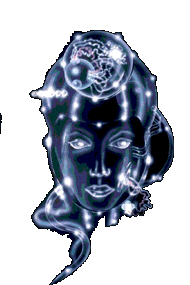Website Sections
- Home Page
- Library of Eugenics
- Genetic Revolution News
- Science
- Philosophy
- Politics
- Nationalism
- Cosmic Heaven
- Eugenics
- Transhuman News Blog
- Future Art Gallery
- NeoEugenics
- Contact Us
- About the Website
- Site Map
News Categories
- Artificial Intelligence
- Astronomy
- Cyborg
- Eugenics
- Freedom
- Futurism
- Futurist
- Liberty
- Nanotechnology
- NASA
- Spirituality
- Transhuman
- Mesothelioma
Partners




Previous Evolution
The question of where to draw the line between closely related
species and subspecies can be resolved differently by
different observers. In the case of modern human populations,
where scientists tend to pursue conflicting socialpolitical
agendas, demarcation lines are hotly contested.
The system of binomial nomenclature established in the
eighteenth century by the Swedish botanist Karl von Linné
(Carolus Linnaeus) for mapping the relationships among all
living things (at least on our planet) lumps together the totality
of modern human populations as Homo sapiens. All humans
alive today, whether bushmen, Australian aborigines,
Japanese, Eskimos, or caucasoids, are thus included in a single
species, and any discussion of subspecies is regarded with
suspicion and hostility. Issued in response to a statement by
the rightist French politician Jean-Marie Le Pen on racial
inequality, a 1997 statement signed by a group of prominent
biologists denied the very existence of race in human populations.
Actually, the denial of race had first been made by the
eugenicist Julian Huxley in 1935. Again, the assertion had
been triggered by political events – in this case the promulgation
of Hitler’s anti-Jewish pronouncements.2 Accordingly we
now have a single “modern man,” and he comes in different
colors. It is true that modern genetic studies have shown remarkable
similarity among all humans, but for that humans
and chimpanzees share something like 99% of their nonduplicative
DNA
Scientists now generally agree that modern human populations
have their origins in Africa, but there is considerable
disagreement as to whether current intergroup differences
are explained by evolution dating back a million years to
Homo erectus (“multiregionalism”) or whether Homo sapiens
showed up as a relatively late arrival, roughly 100,000-
200,000 years ago, and then proceeded to wipe out competing
hominid emigres wherever he came into contact with them
(“replacement” theory). The degree to which earlier hominid
species interbred remains in the area of speculation, in which
the multiregionalists have been accused of making a case for
fundamental biological differences that amounts to racism.3
In the words of the scholar Seymour Itzkoff, we are dealing
here with a “will to believe [which] is reminiscent of the seduction
of intellectuals with abstract ideological models in
politics and social thought.
The family trees of the cheetah and the horse provide
useful contrasting models. Genetic studies have demonstrated
that today’s cheetahs display so little diversity that
their ancestors must at one time have come through such a
narrow bottleneck that only a few individuals were able to
perpetuate the species by inbreeding. Horses, by contrast,
display tremendous variance as a result of independent taming
and breeding in different parts of the world.
Ultimately, genetics is more like a game of chess, where
the development of a position is of strictly historical interest
and plays no role in determining the game’s outcome, than it
is like bridge, where success is determined largely by the
player’s ability to remember which cards were played earlier.
The variability so obvious in human populations, even on an
intragroup basis, opens the possibility of intervening in human
evolution to guide it and even to search for new horizons,
regardless of how present variability came about.
Where we came from is a fascinating question, but where we
are heading is quite another.
Even the replacement school of thought concedes that the
human species developed for at least some five to eight thousand
generations outside of Africa under radically differing
conditions of selection. Such a sequence is sufficient to produce
significant differences in the various subpopulations.
In addition, still greater diversity would have to be postulated
on the basis of the biological diversity that must have been in
evidence at the time the various populations left Africa. Since
human populations have had a far longer time to evolve in
Africa than outside the mother continent, African populations
display far greater genetic diversity than do other races, and
the tiny populations who wandered out of Africa may well
have reflected at least part of this diversity. Moreover, the
émigrés may have interbred with other hominid species both
in Africa and with those that had arrived still earlier. Animal
breeders, by comparison, can achieve significant changes in
just a few generations. These factors, combined with the professional
specialization of modern society and selective mating,
represent the chief sources of intra-species variance.
If Homo sapiens has been around for perhaps 150,000
years, our future existence may be considerably more ephemeral.
Humanity is thus a colony with a beginning and evidently
an end and is viewed here, not just as all people alive
at any given moment, but as the totality of future people over
the entire lifespan of this community. Eugenicists reason
that our moral obligations are to all of them, that we are not
only part of the planet’s ecology, its custodians as well. As the
mythologist Joseph Campbell put it, we are no less than its
consciousness.
The renowned geneticist James V. Neel studied the society
and genetic makeup of the Yanomama of southern Venezuela
and northern Brazil and persuasively argued that the
structure of their society was typical of human populations
during the period when people still lived exclusively in bands,
that is, for all but the last 10,000 years. These were small,
isolated populations which practiced polygamy and incest,
permitting nature to select among a rich variety of genotypes
in widely differing environments. Such conditions were conducive
to rapid evolution. Panmixia may still be a long way
off, and indeed may never be total, but the ever-increasing
outbreeding of human populations is reducing human diversity
while at the same time creating large populations that
are, perhaps, less prone to sudden, major genetic fluctuations.
History clearly demonstrates that social harmony is especially
difficult to achieve in the face of diversity, whether
religious, linguistic, or ethnic. The great historical crimes
have all been instances of group-on-group violence. And when
two or more ethnoses are clearly distinguishable from one
another, the situation is fraught with even greater stress.
The United States, which renounced the monstrous crime of
slavery only to retain blatant discrimination for a century, is
now attempting to achieve racial equity, but the fear of racial
conflict is and will undoubtedly remain both large and, unfortunately,
well founded. At the same time the issue has been
blurred, racism being defined as a) group discrimination and
hatred and b) discussion of intergroup differences. The two
topics are really quite different, albeit not unrelated. Society’s
elites have decided that studies of intergroup differences
are too volatile to permit them to be widely discussed and
have falsely presented such studies as claiming total separation
of group qualities rather than relative statistical frequency
of specific characteristics.
We should all be able to agree that intergroup differences
are a scientific, not a moral question. As far as the eugenics
argument is concerned, they are irrelevant in the most fundamental
fashion. Even if the desired breeding resource
proves to be distributed differently in some populations than
in others, each group contains a vast pool of talented individuals
to draw upon in parenting future generations. Regardless
of the magnitude of such intergroup differences, the
reality is that even on an intragroup basis we ought to be less
than pleased with ourselves.
Transtopia
- Main
- Pierre Teilhard De Chardin
- Introduction
- Principles
- Symbolism
- FAQ
- Transhumanism
- Cryonics
- Island Project
- PC-Free Zone





More News
- Aerospace
- Astro Physics
- Beaches
- Eco System
- Gene Therapy
- Genetic Engineering
- Genetic Medicine
- Health Care
- Human Genetics
- Islands
- Libertarian
- Libertarianism
- Medical School
- Medicine
- Mind Upload
- Molecular Medicine
- Moore's Law
- Nano Engineering
- Nano Medicine
- Planetology
- Red heads
- Space Flight



